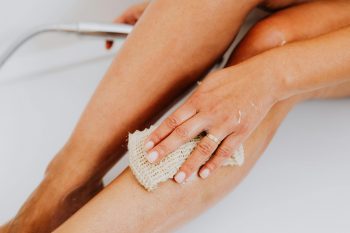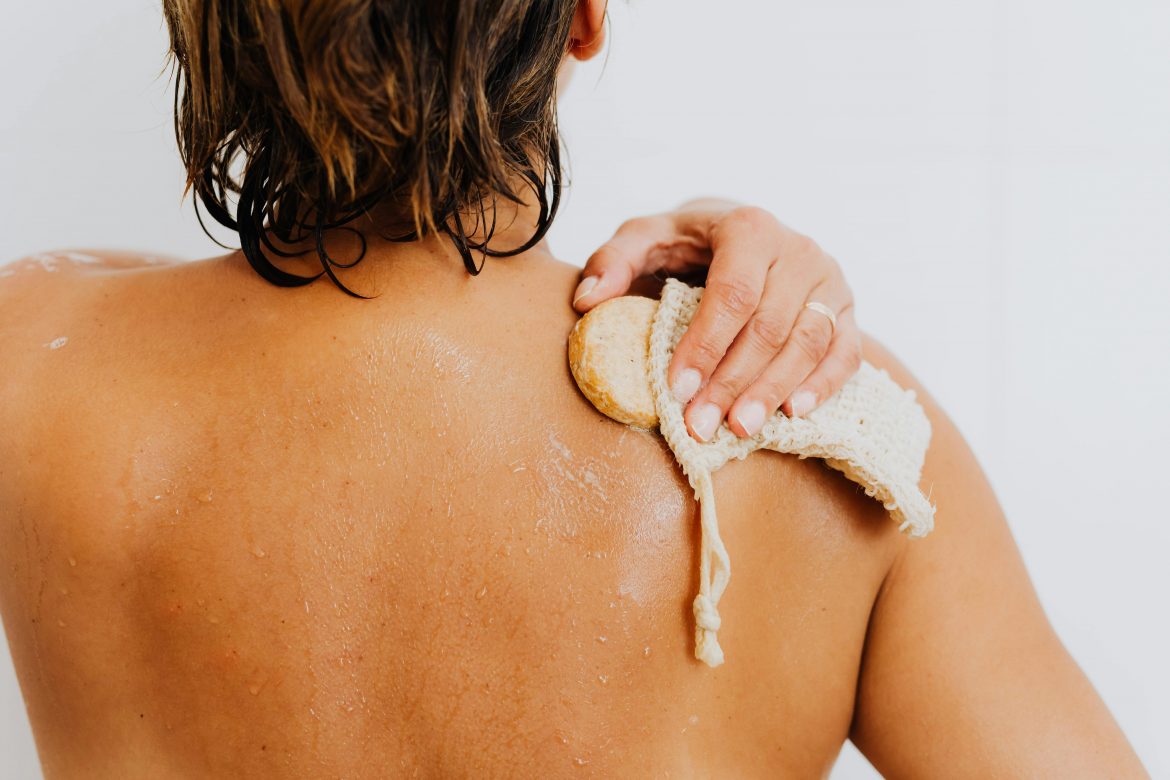If you’re wondering about whether your shower sponge or loofah requires a deep clean or replacement – the answer is most likely yes!
It’s important to know when to wash or replace your shower sponge or loofah because these items can quickly become breeding grounds for bacteria, mould, and mildew due to the warm, moist environment of your bathroom.
Ignoring sponge/loofah hygiene means that you may likely be undermining your skincare routine and posing health risks. By washing, drying, and replacing them on schedule, you can protect your skin and overall health. Here’s everything you need to know about deep cleaning and replacing your shower tool of choice!
ALSO READ: How to care for your makeup brushes properly
When is the best time to clean or replace your shower sponge or loofah?
Different tools require different care. You’ll need to replace natural or more porous sponges more frequently than those made with synthetic materials. Here’s a general guide!

Pexels
When to replace natural shower sponges or loofahs (plant-based)
Natural loofahs are often made from dried fibrous vegetable material (like luffa plants), that create a dense network of tiny holes. These crevices trap dead skin cells, soap residue, and moisture, creating an ideal environment for bacteria, mould, and mildew to grow and spread.
Unlike synthetic materials, natural loofahs also take longer to dry, keeping them damp for hours after use. Bacteria like Staphylococcus aureus thrive in these conditions. Reusing a contaminated loofah can lead to folliculitis (infected hair follicles), rashes, and fungal infections.
To avoid the chances of contamination, store outside the shower to dry fully between uses.
A natural sponge or loofah should be replaced every 3-4 weeks. When the time comes, you can compost old loofahs if they are 100% plant-based!
When to replace synthetic shower sponges/poufs
Plastic or mesh materials have smoother surfaces, making them slightly less prone to trapping debris. However, their layered or loopy designs still harbour microbes in hard-to-reach crevices.
Studies show synthetic shower poufs can host E. coli and other bacteria if not cleaned and dried properly. Always make sure to rinse your sponge thoroughly (until water runs clear) and hang in a sunny spot outside of your shower to dry.
Cut open your sponge or pouf after 2 months—you’ll likely find discoloured, slimy residue inside the layers. After the 2 month mark, it’s generally a good time for a replacement.

Freepik
When to clean and replace a washcloth
Washcloths require regular cleaning because fabric fibres can trap dead skin and soap scum quite quickly. Reusing without washing will spread bacteria back onto your skin. As with any shower tool, a washcloth should be rinsed thoroughly after each use and hung in a dry, ventilated area.
As a rule of thumb, a washcloth should be machine washed after 1-2 uses and replaced every 6-12 months, depending on wear.
Weekly cleaning: Soak in a solution of 1 part bleach to 10 parts water for 5 minutes, or run through a dishwasher/washing machine (if heat-safe). How does bleach help? Sodium hypochlorite (the active ingredient in bleach) destroys bacteria, mould, and viruses by breaking down their cell walls and proteins. White vinegar or hydrogen peroxide (non-bleach options) can disinfect but may be less effective against mould.
Signs you should replace your shower sponge immediately
Odour and mould: Any mildew smell or visible mould. Look for black, green, or pink speckles/spots.
Texture change: If it becomes slimy, discoloured. Watch out for a slimy film that remains after rinsing.
Smell: Musty or sour odour (even without visible mould).
Disintegration: Fibres breaking apart, holes forming, or flattened texture (this means reduced exfoliation power).
Why silicone shower sponges are better
Silicone is considered one of the best options for a shower sponge if you want something longer-lasting and more hygienic.
This is due to the fact that silicone doesn’t have the tiny holes or fibrous structure that traditional loofahs or sponges do. In turn, this means that dead skin cells, soap residue, and bacteria don’t get trapped as easily.
Silicone is also very durable and can last months or even years with proper care, unlike traditional loofahs that need replacing every few weeks.
Because you don’t need to replace them as often, silicone sponges create less waste over time, which is another plus.
To clean, rinse with hot water after use, or toss it in the dishwasher or boil it occasionally for deep cleaning—something you can’t do with a traditional sponge.
ALSO SEE:
How to simplify your hair routine and boost results with better habits and tools
Feature Image: Pexels

